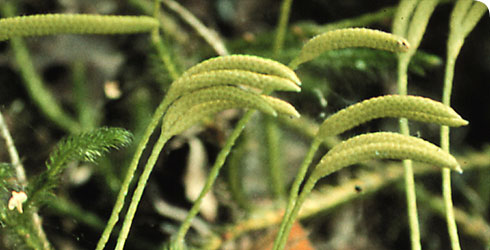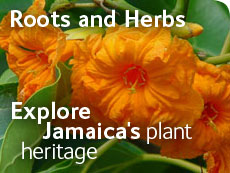Industry
The natural world is an incredible source of medicines and other valuable resources.
New uses of natural products are being discovered all the time. Others have been known about and used by indigenous people for hundreds of years.
Scientists at the Museum study organisms, particularly plants, that can be used to provide a range of different products, from vitamin supplements to biofuels, and medicines to flower arrangements.
The trade in these products can have enormous benefits to local communities in less developed areas of the world. However, they are not always harvested sustainably, and new conservation measures are needed in some areas.
Explore some of the species Museum scientists study below.
-

Amphipleura pellucida - 24/09/2010
Amphipleura pellucida is a minute photosynthetic organism that can glide across surfaces and is often found suspended in plankton in freshwater lakes. It has a silica cell wall with a highly regular structure that can remain preserved in sediment for centuries. Discover how scientists use this tiny organism’s regular shape to test the magnifying power of microscopes.
-

Azolla filiculoides (water fern) - 15/11/2010
Azolla filiculoides is a tiny invasive fern that has spread around the world, but can be put to good use. It thrives in nutrient-rich ponds and ditches, where it forms potentially damaging thick mats of foliage. Azolla can be a useful fertiliser, thanks to a nitrogen-fixing alga that lives in it, and so is often used in paddy fields to improve rice yields. Take a closer look at this floating fern.
-

Bibio marci (St Mark’s fly) - 25/04/2010
St Mark’s Fly (Bibio marci) is a large, hairy black fly known for the mating swarms of the males. It is also the model for a fly fishing pattern, known as the hawthorn fly. Find out more about this species.
-

Chamaedorea ernesti-augusti (fishtail palm) - 19/01/2010
The fishtail palm is a favourite accompaniment to floral arrangements. However, it has become endangered due to destruction of the rainforests it grows in and harvesting to meet floricultural industry demands. Find out more about this Central American plant.
-

Desmodesmus subspicatus (pond scum, green weed) - 09/10/2010
Desmodesmus subspicatus is a freshwater green alga that it is found throughout the world. It usually forms flat colonies of cells, but changes to environmental conditions, such as nutrient levels, can trigger it to convert to a unicell form. Find out more about the structure of this microscopic organism and why it is often referred to as a ‘green weed’.
-

Lycopodium clavatum (wolf paw clubmoss) - 10/01/2010
Lycopodium clavatum resembles some of the earliest plants to live on land. It is used to make Lycopodium powder, which has a range of uses including an explosive used by the film and entertainment industries. Find out more about this plant and the conservation issues it faces.
-

Nitzschia sigmoidea - 28/04/2010
Nitzschia sigmoidea is a large freshwater diatom (microscopic alga) that can be found growing on the surface of mud in ponds and streams. Nitzschia sigmoidea has many uses e.g. as a metal polish. Find out more about Nitzschia sigmoidea.
-

Plicopurpura pansa - 12/08/2010
Indigenous people in parts of Central and South America have an unusual way of dyeing cloth - by milking snails. Plicopurpura pansa produces a thick liquid from a gland which turns a rich indigo when exposed to sunlight. Find out how the dye is harvested and why its increasing popularity has an adverse effect on snail populations.
-

Solanum lycopersicum (cultivated tomato) - 08/07/2010
Solanum lycopersicum, the cultivated tomato, originated from South America but is now grown worldwide for its fruits. Recent work by scientists has seen the species classified under the genus Solanum, instead of its previous genus Lycopersicon. Find out more about this species.
-

Solanum melongena (aubergine) - 15/01/2010
More commonly known as the aubergine or eggplant, Solanum melongena is used in cooking throughout the world. Learn about the history, the unusual flowering process and the conservation status of Solanum melongena.
-

Solanum sisymbriifolium - 23/11/2010
Solanum sisymbriifolium is a prickly plant with sticky leaves and bright red fruits. It is native to South America, where it grows like a weed. It has been grown in Europe since the 18th century, where it is known as viscid nightshade thanks to the tiny hairs on its leaves and fruits. Discover more about this ‘spiny’ plant, and how farmers use it to control a potato pest.
-

Ananas comosus (pineapple) - 02/11/2010
The pineapple, Ananas comosus, was first discovered by the Tupi-Guaraní Indian tribe in what is now Paraguay. Ananas comes from the Tupi word meaning excellent fruit, and the name pineapple was coined by European explorers who noticed the fruit’s similarity to pine cones. Find out more about this succulent fruit and its many uses.
-

Boswellia sacra (frankincense) - 16/12/2010
Frankincense has been used for centuries in religious rituals, and in the story of Christmas it is one of the gifts brought to Jesus by the wise men. It comes from a resin produced by the Boswellia sacra tree and its relatives, which grow in arid conditions along the Arabian Peninsula. Explore the frankincense tree’s exotic history, and the lucrative trade it created.
-

Cereus stenogonus (tuna candelabro, cardón) - 11/11/2010
Cereus stenogonus is a tree-like cactus that is commonly found in the Dry Chaco region of Paraguay. It has striking flowers and edible fruits, and its wood and spines are used by indigenous people to make utensils and children’s toys. Discover where you might spot this spiky plant in the Dry Chaco forests of South America.
-

Hoodia currorii (Ghaap, hoodia cactus) - 10/10/2010
For centuries, Hoodia currorii and its relatives have been used by African tribesmen to quench thirst and suppress appetite during long hunting trips. Scientific studies have helped identify the plant’s active compounds, which are now being harnessed for medicinal purposes. Discover more about this striking desert cactus, and its many uses.
-

Liquidambar styraciflua (sweetgum) - 03/10/2010
The sweetgum tree, Liquidambar styraciflua, is native to the Americas but is commonly cultivated in the UK. It has striking purple, red and yellow leaves in autumn and as its name suggests, it exudes a resin that can be used in many ways including as an adhesive, and in soaps and medicines. Find out more about this beautiful tree.
-

Macrocystis pyrifera (giant kelp) - 06/10/2010
Macrocystis pyrifera, is a giant among seaweeds. Its fronds can grow up to 45m long in a single season and it forms extensive underwater forests that create the base for an ecosystem of hundreds of marine animals. For years it has been harvested for commercial purposes. Find out how this seaweed is exploited, and what threatens its survival.

